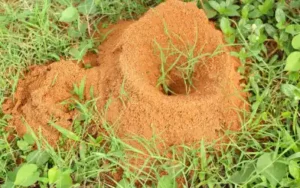 Fire ants, often called “red imported fire ants” originate from Brazil but were introduced to the United States around 1940. Since then, they have spread throughout much of the southeast, including right here in Tennessee. Because these pests can pose a serious threat, it’s important to know how to recognize them as well as how to stay safe from their painful stings. Learn more with the ant control experts right here at Johnson pest Control.
Fire ants, often called “red imported fire ants” originate from Brazil but were introduced to the United States around 1940. Since then, they have spread throughout much of the southeast, including right here in Tennessee. Because these pests can pose a serious threat, it’s important to know how to recognize them as well as how to stay safe from their painful stings. Learn more with the ant control experts right here at Johnson pest Control.
What to Know About Fire Ants
Fire ants differ from your typical house ant in a number of ways. The most important things to know about these potentially dangerous pests include:
- If a fire ant mound is disturbed, they will attack as one unit. When disturbed, the ants will begin spilling out ready to attack—and each ant will sting repeatedly.
- To begin a fire ant colony, queen fire ants mate with males, killing the male in the process, and fly to the site at which she’ll begin the new colony. The queen will lay up to 800 eggs per day, growing the colony to an average size of 100,000 to 500,000 ants.
- Fire ants don’t bite—they sting! Their stings can result in a burning sensation, hence their name. The sting site may swell and itch. A small pustule sometimes develops where the stinger enters the skin.
- If fire ants get on you, it’s important to quickly and repeatedly brush them off your skin. The ants can latch on tight, meaning shaking won’t repel them. If you develop symptoms from fire ants, it’s important to seek medical attention.
- Fire ants typically nest outdoors in open areas. Parks and fields are usually primary targets, but yards can be as well. The mounds are often found lining your grass and concrete, and they typically form on humid days.
Need Help Getting Rid of Fire Ants?
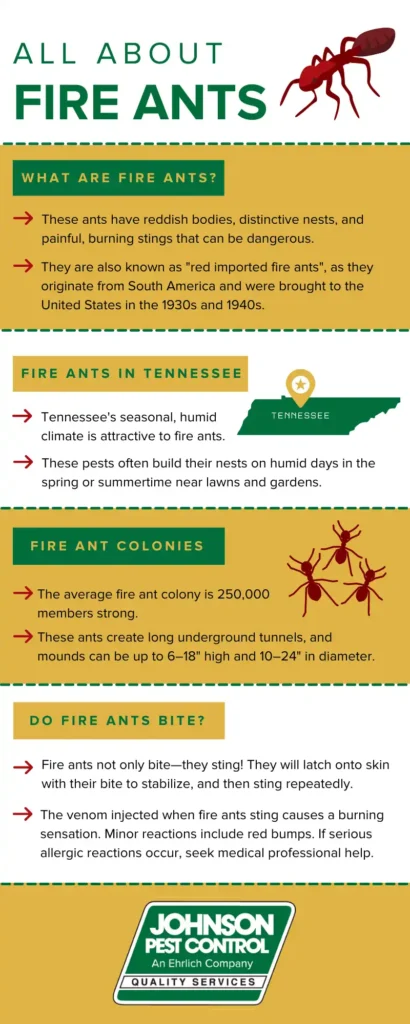 How to Prevent Fire Ant Problems
How to Prevent Fire Ant Problems
To thrive, fire ants need moisture and shelter. By making your yard less attractive to fire ants in the first place, you can keep fire ants away from your property. This is best done by taking care of your lawn and yard. Here’s how to prevent fire ants from building a nest in or near your property:
- Trim back your trees and shrubs to keep fire ants from traveling on them.
- Rake back any mulch, straw, or other landscaping at least 6 inches from the structure of your home.
- Mow the lawn regularly to avoid overgrown grass. Remove grass clippings and piles of leaves to eliminate fire ant harborages.
- Store outdoor trash cans and dumpsters as far away from the structure as possible and be sure they have tight-fitting lids.
- If you start to see a fire ant nest form, avoid contact and get in touch with your local ant exterminators for treatment.
Need to Get Rid of Fire Ants?
Trying to get rid of a fire ant mound yourself is dangerous. Their colonies extend far under the ground and feature multiple queens. Fire ant treatment should always be administered by a professional ant control expert to keep yourself and your family safe.
For fire ant treatment in Eastern TN, contact the ant exterminators at Johnson Pest Control today!
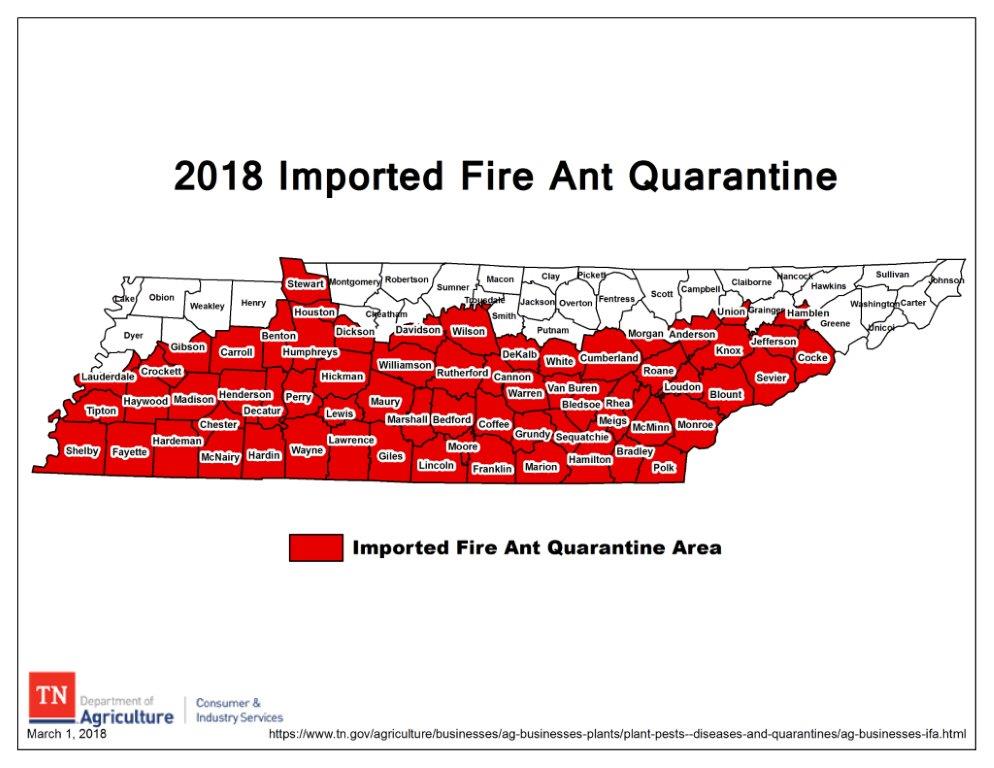 If you are getting out into the garden this time of year then you will likely come across some ants. The ants we all know we do not want to come across are fire ants. Fire ants are serious pests that will swarm and bite all over you, your children, and your pets if they are agitated. These pests are common in Tennessee, making it important to learn all you need to know about them and the threats they bring. At Johnson Pest Control, we are committed to helping our communities learn about the threats of fire ants. Read on to learn all you need to know about
If you are getting out into the garden this time of year then you will likely come across some ants. The ants we all know we do not want to come across are fire ants. Fire ants are serious pests that will swarm and bite all over you, your children, and your pets if they are agitated. These pests are common in Tennessee, making it important to learn all you need to know about them and the threats they bring. At Johnson Pest Control, we are committed to helping our communities learn about the threats of fire ants. Read on to learn all you need to know about 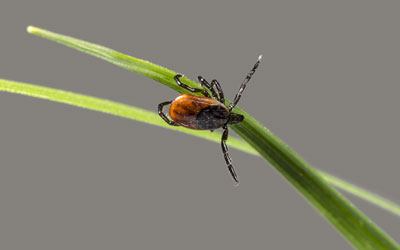 Ticks are one of the most common spring and summertime pests in Tennessee. They’re also one of the most dangerous. Ticks are infamous for transmitting a number of diseases, including Lyme disease. While getting Lyme disease is rare, it can happen when an infected tick is embedded in someone’s skin for upwards of two days. This makes it essential to learn how to safely remove ticks when they bite you or a family member.
Ticks are one of the most common spring and summertime pests in Tennessee. They’re also one of the most dangerous. Ticks are infamous for transmitting a number of diseases, including Lyme disease. While getting Lyme disease is rare, it can happen when an infected tick is embedded in someone’s skin for upwards of two days. This makes it essential to learn how to safely remove ticks when they bite you or a family member.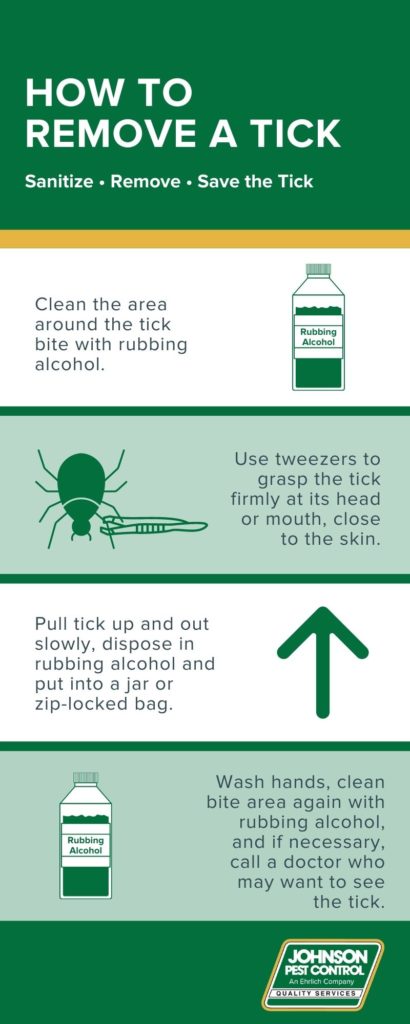 How Can I Remove a Tick?
How Can I Remove a Tick?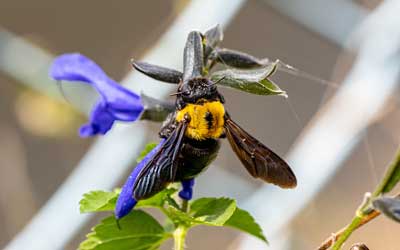
 This April, we at Johnson Pest Control are proud to celebrate National Pest Management Month. We honor this tradition set forth by the National Pest Management Association (NPMA) every year to acknowledge the pest control industry’s commitment to serving the public and eliminating health threats caused by pests.
This April, we at Johnson Pest Control are proud to celebrate National Pest Management Month. We honor this tradition set forth by the National Pest Management Association (NPMA) every year to acknowledge the pest control industry’s commitment to serving the public and eliminating health threats caused by pests.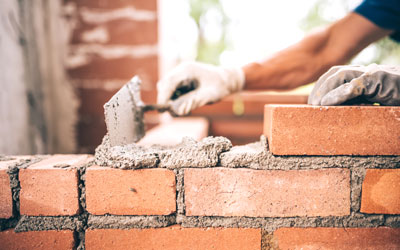 As wood-destroying insects, termites are most infamous for infesting and damaging wooden structures. But what about brick, concrete, or stone homes? Unfortunately, termites are still a threat to these types of buildings. This is because there are many risk factors at play when it comes to what makes a property vulnerable to a termite problem. For Termite Awareness Week 2021, the termite control experts at Johnson Pest Control are here to help our Sevierville TN customers understand what may put them at risk for a termite problem. Read on to learn more!
As wood-destroying insects, termites are most infamous for infesting and damaging wooden structures. But what about brick, concrete, or stone homes? Unfortunately, termites are still a threat to these types of buildings. This is because there are many risk factors at play when it comes to what makes a property vulnerable to a termite problem. For Termite Awareness Week 2021, the termite control experts at Johnson Pest Control are here to help our Sevierville TN customers understand what may put them at risk for a termite problem. Read on to learn more!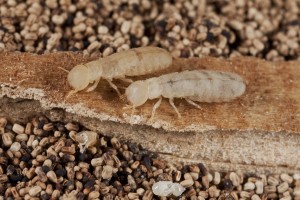
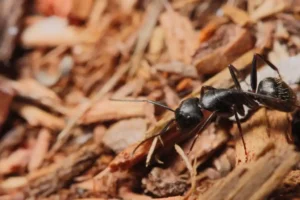 Ants are the number one household pest problem. Most ant species are a nuisance but won’t pose much of a threat otherwise. However, that is not the case with carpenter ants. These ants are known to burrow through wood and can oftentimes be mistaken for termites. Because carpenter ants are more dangerous than other species of ants that may infest your Sevierville TN home, it’s important to learn about their behaviors and what you can do to prevent them.
Ants are the number one household pest problem. Most ant species are a nuisance but won’t pose much of a threat otherwise. However, that is not the case with carpenter ants. These ants are known to burrow through wood and can oftentimes be mistaken for termites. Because carpenter ants are more dangerous than other species of ants that may infest your Sevierville TN home, it’s important to learn about their behaviors and what you can do to prevent them. Carpenter ants chew up wood into ‘galleries’ in order to create places for them to lay eggs. Unlike the termites whose wood chewing develops mud-like tunnels, the carpenter ants chewing is dry. If you notice small piles of sawdust around a woodpile or under roof eaves then the likely hood of carpenter ants being the problem goes up.
Carpenter ants chew up wood into ‘galleries’ in order to create places for them to lay eggs. Unlike the termites whose wood chewing develops mud-like tunnels, the carpenter ants chewing is dry. If you notice small piles of sawdust around a woodpile or under roof eaves then the likely hood of carpenter ants being the problem goes up. 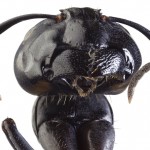 Carpenter ants do not pose a threat to human health. They can damage a home structurally if allowed to feed on your home unchecked. But the most they can do to a human is bite them, which feels like a slight pinch. They do look pretty formidable a bug with their front pinchers and comparable size to other ants.
Carpenter ants do not pose a threat to human health. They can damage a home structurally if allowed to feed on your home unchecked. But the most they can do to a human is bite them, which feels like a slight pinch. They do look pretty formidable a bug with their front pinchers and comparable size to other ants.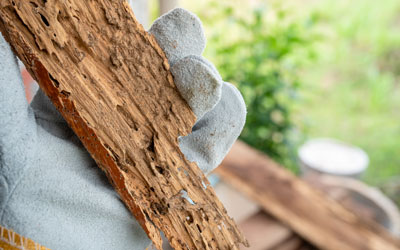 Although termites are active year-round in Tennessee, their activity is more abundant than ever in the spring months. To better prepare yourself for the coming termite season, it’s wise to learn how to recognize the signs of termites. In doing so, you can prevent your chances of getting a serious infestation. Termites are rarely seen, which is why noticing any of the signs we’ll discuss here means it’s time to call your local termite exterminators. The team at Johnson Pest Control is committed to keeping you termite-free year-round, which is why we’re here to help you learn about looking for signs of a termite infestation.
Although termites are active year-round in Tennessee, their activity is more abundant than ever in the spring months. To better prepare yourself for the coming termite season, it’s wise to learn how to recognize the signs of termites. In doing so, you can prevent your chances of getting a serious infestation. Termites are rarely seen, which is why noticing any of the signs we’ll discuss here means it’s time to call your local termite exterminators. The team at Johnson Pest Control is committed to keeping you termite-free year-round, which is why we’re here to help you learn about looking for signs of a termite infestation.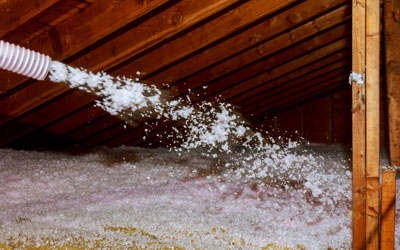 Whether you’re looking to upgrade your existing insulation or need to insulate a brand-new home, TAP® Insulation is a sound choice. This home insulation product is renowned for many reasons, including its energy-efficient performance and pest-resistant properties. Infused with borate, TAP works to prevent and control pest problems in the household. Because it outperforms traditional insulation, TAP is quickly becoming the go-to insulation option here in Sevierville TN and beyond. The pros at Johnson Pest Control are here to share all you need to know about this industry-leading home insulation option.
Whether you’re looking to upgrade your existing insulation or need to insulate a brand-new home, TAP® Insulation is a sound choice. This home insulation product is renowned for many reasons, including its energy-efficient performance and pest-resistant properties. Infused with borate, TAP works to prevent and control pest problems in the household. Because it outperforms traditional insulation, TAP is quickly becoming the go-to insulation option here in Sevierville TN and beyond. The pros at Johnson Pest Control are here to share all you need to know about this industry-leading home insulation option.